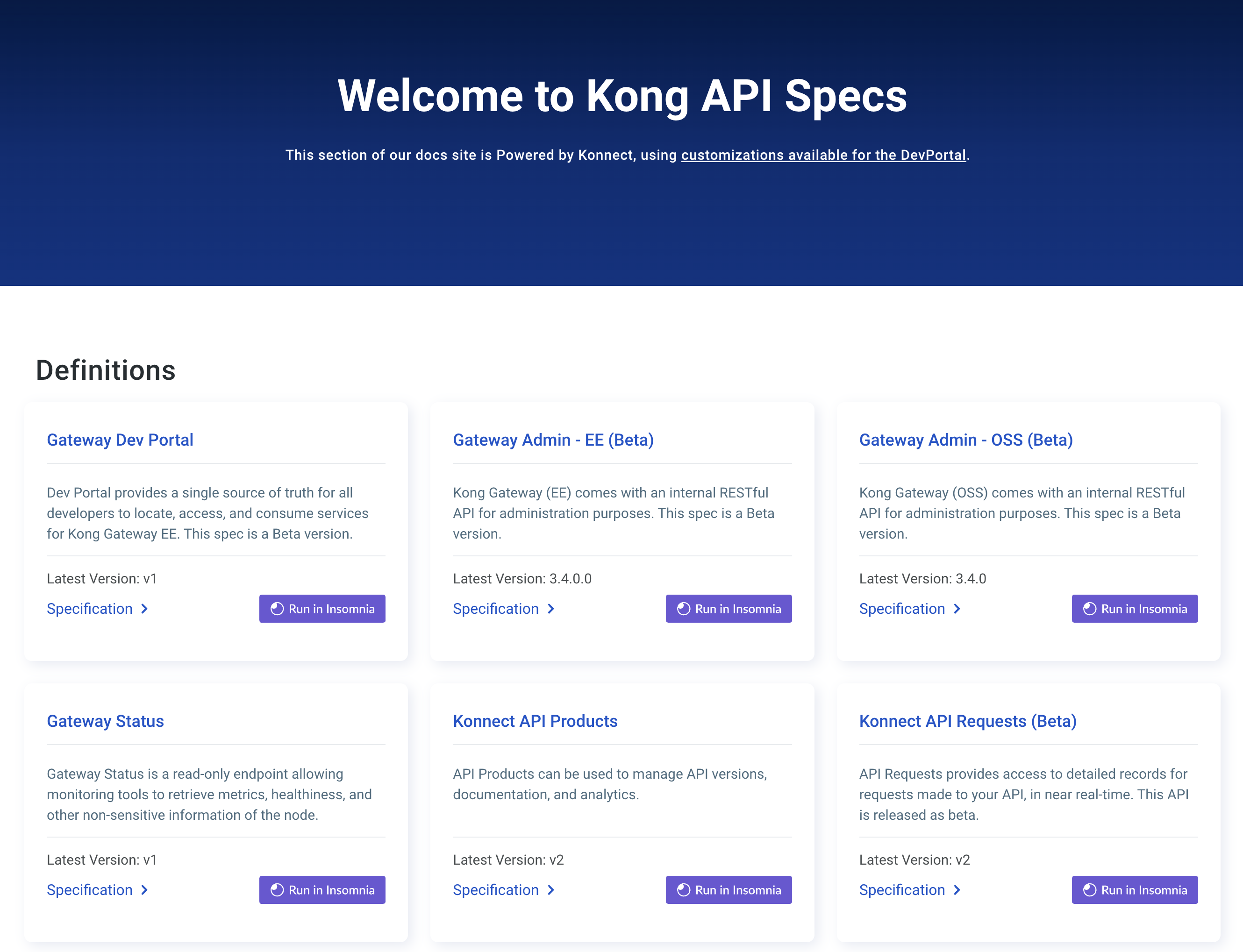このページは、まだ日本語ではご利用いただけません。翻訳中です。
旧バージョンのドキュメントを参照しています。 最新のドキュメントはこちらをご参照ください。
DataPlane
DataPlane ‘s status field contains invaluable information about managed Kong Gateway deployments.
How to retrieve it
Let’s use the following DataPlane as an example:
echo '
apiVersion: gateway-operator.konghq.com/v1beta1
kind: DataPlane
metadata:
name: example
spec:
deployment:
podTemplateSpec:
metadata:
labels:
dataplane-pod-label: example
annotations:
dataplane-pod-annotation: example
spec:
containers:
- name: proxy
image: kong/kong-gateway:3.6.1.1 ' | kubectl apply -f -
To wait for the DataPlane to get ready we can use the following command:
kubectl wait -n default dataplane example --for=condition=Ready
After a couple of seconds we should see:
dataplane.gateway-operator.konghq.com/example condition met
Having this DataPlane deployed we can get all sorts of information from its status field.
For example, if you’d like to get its addresses you can simply run:
kubectl get -n default dataplane example -o jsonpath-as-json='{.status.addresses}'
Which could yield:
[
[
{
"sourceType": "PrivateLoadBalancer",
"type": "IPAddress",
"value": "172.18.128.1"
},
{
"sourceType": "PrivateIP",
"type": "IPAddress",
"value": "10.96.194.111"
}
]
]
DataPlane proxy service
To get DataPlane’s proxy Service name you can query the .status.service field like so:
kubectl get -n default dataplane dataplane-example -o jsonpath-as-json='{.status.service}'
[
"dataplane-ingress-dataplane-example-sj54n"
]
Troubleshooting using status condition
If your DataPlane does not work you can start by looking at its .status.conditions field.
kubectl get -n default dataplane dataplane-example -o jsonpath-as-json='{.status.conditions}'
Which can give you more insight into the underlying problem:
[
[
{
"lastTransitionTime": "2024-03-22T17:59:13Z",
"message": "Waiting for the resource to become ready: Deployment dataplane-dataplane-example-bdqjq is not ready yet",
"observedGeneration": 2,
"reason": "WaitingToBecomeReady",
"status": "False",
"type": "Ready"
}
]
]












